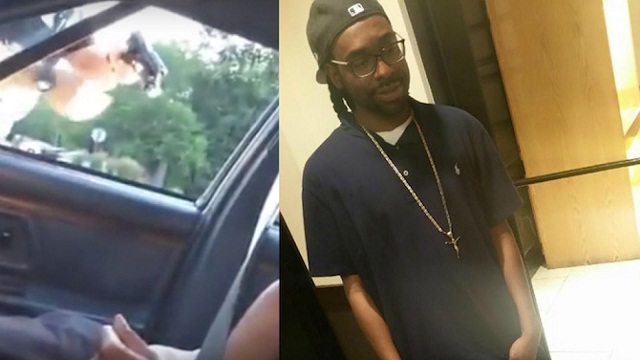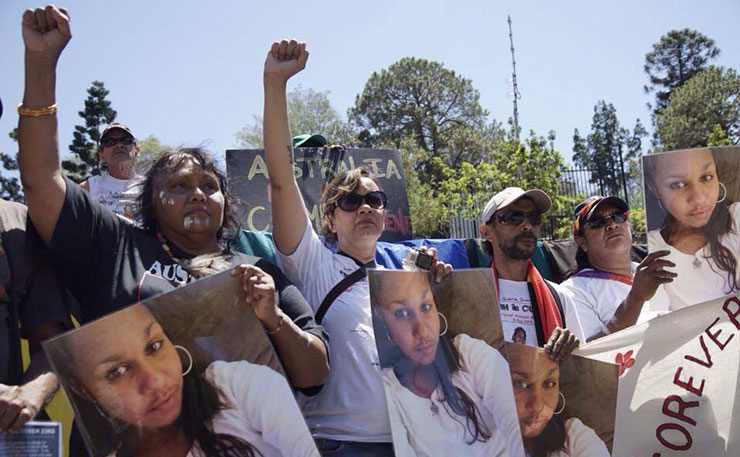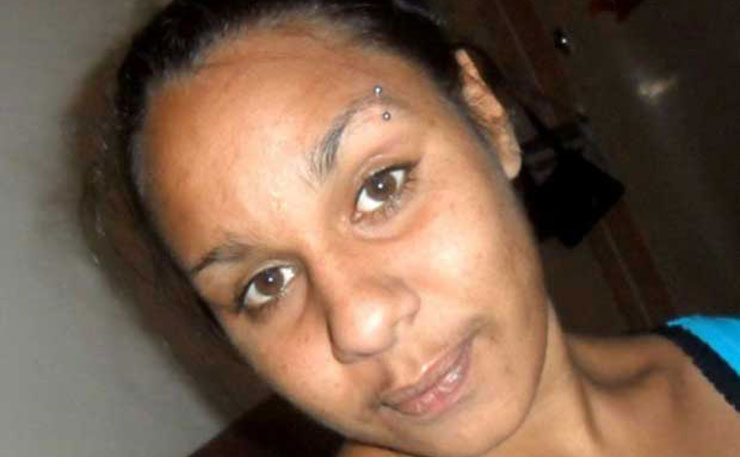In the US, the omnipresence of video recording devices has challenged the power police have over black lives. As the death of Ms Dhu shows, the same shift is yet to occur in Australia, writes Amy McQuire.
Last week, millions of people around the world saw the two videos that cut straight through the lies peddled by the thin blue line.
In the same week, footage emerged of the police shootings of two black men – Alton Sterling in Louisiana, and Philando Castile in Minnesota. The video of Alton Sterling shows the 37-year-old black man lying on the ground outside a convenience store as one police officer tries to pin him down. While struggling, another cop draws his gun and shoots him in the face.
Philando Castile’s death was broadcast straight to Facebook Live by his girlfriend Diamond Reynolds, who was sitting beside him in the car when he was supposedly pulled over by police for a broken tail light. Also present was Diamond’s four-year-old daughter.

Both videos have helped galvanise worldwide support for the Black Lives Matter movement. Although disturbing, the footage gives black victims of police brutality power in a way that was previously ripped from them. You can’t slander them as criminals and aggressors; you can’t strip them of their humanity because the footage is undeniable. That said the police are still trying. But there has been a slight repositioning of power from the perpetrator – who is automatically believed because of his uniform – and back to the victim, who has finally been given a greater voice.
And the videos have also meant there is greater scrutiny on police. It has since emerged that rather than pulling him over for a broken tail light, the police officer who killed Philando Castile had actually suspected the man was a robbery suspect because of his “wide-set” nose.
The man who owned the store where Alton Sterling was shot is now suing the police, alleging that two officers removed the entire store security surveillance system, took his mobile phone on which he had filmed the killing, and detained him in the back of a police car. The police allege they had seen Alton Sterling pulling out a gun.
Black lives matter has also dominated news broadcasts in Australia – largely because of the Dallas Shootings, which resulted in five cops being killed.
Sometimes it’s easy for Australians to look overseas, and believe that the outrages that gave rise to movements like Black Lives Matter are foreign. But for Aboriginal Australia, this is a common story. The problem is, of course, that it is less visible.
About a quarter of a century ago, the Royal Commission into Aboriginal Deaths in Custody handed down its extensive reports into 99 black deaths. The royal commission was the result of sustained campaigning and outrage by Aboriginal communities who were sick of seeing our people die in jail. A lot has been made of the problems around the terms of reference, and the reports concluded that Aboriginal people were not dying at disproportionately high rates, but that they were more likely to be in custody. That crisis of Indigenous over-incarceration continues to this day – and has risen sharply since the days of the Royal Commission.
But the perception that the problem is one of over-incarceration can at times mislead and even bury the violence that Aboriginal and Torres Strait Islander people are subjected to in watch houses and prisons across the country.
When I talk about violence, I’m not talking about a police officer coming and shooting a black man in the head, like the case of Alton Sterling. I’m talking about the type of structural apathy shown to black victims who are rendered voiceless behind prison or police station walls.
There are cases of violence within the 99 death in custody reports: in so many of the reports, police officers and correctional service officers failed in their fundamental duty of care. Harrison Day, described as a “sober, harmless man” and an epileptic who was locked up for failing to pay fines, died on route to hospital in 1982. Commissioner Hal Wooten found that Harrison Day did not receive supervision suitable for even a “fit prisoner”. In fact, he shouldn’t have even been in prison.
Nita Blankett died in the same year. She suffered from chronic asthma and waited for three devastating hours before she was transported from her cell to the medical centre. She also died on route.
Both cases, and all the cases in the 99 individual death reports, present a devastating indictment on the system, one that does not care about black lives. Of course, there were also outrageous cases of police brutality within the archive. David Gundy was killed by a police officer during a botched dawn raid on his Marrickville home in 1989. The raid was looking for another Aboriginal man wanted over the shooting of a cop. Commissioner Hal Wooten found that the basis of the information was on a “nonsensical statement” by an informant that the shooter may have been in David Gundy’s house. David Gundy was shot in the room near where his small son Bradley Gundy was sleeping.
The case of John Pat was also a clear example of police brutality. An off-duty police officers bashed Pat to death in Roebourne in 1983. He died on a watch house floor.
There are still similar cases of police brutality occurring across the country today. Like the 14-year-old Aboriginal boy in Kempsey who was tasered and capsicum sprayed as he cried out in pain for his dead mother.
Or the case of Kevin Spratt, an Aboriginal man who was repeatedly tasered in a Perth Watch House in 2008.
Or the case of Aboriginal woman Sheila Oakley who was left blinded in one eye after being tasered by a police officer in Brisbane in 2014.
Or the case of Mark Mason Snr, an Aboriginal man who was shot dead by a police officer in Collarenebri, in 2010.
Or the case of my colleague Leon Petrou, who was bashed and tasered by police nearly three years ago in Brisbane for the sole reason of being big and black and supposedly threatening.
It’s easy to outsource our outrage overseas while turning away from the police brutality that hurts so many Aboriginal and Torres Strait Islander people.
But it is even easier to ignore the brutality of state institutions that lock up Aboriginal and Torres Strait Islander men, women, and children at increasing rates, and fundamentally fail in their duty of care, a form of state violence in itself.
It was this violence that killed Yamitji woman Ms Dhu in a Port Hedland watch house in 2014. She was jailed for about $3,000 in fines, and was died slowly of a broken rib sustained in a previous domestic violence incident. Rather than believe her cries of pain, some of the police officers and health professionals ‘looking after her’ misdiagnosed the problem, believing it to be “a little bit attention-seeking” from a “junkie” who was “faking it or putting it on”.

On her third trip to the Hedland Health Campus, which by the way, is literally so close to the police station that the two share a car park, she died. She had been handcuffed and dumped in the back of the police van. Human rights lawyer George Newhouse, who sat in on Ms Dhu’s inquest last year, told me CCTV footage of the incident shows “the public aren’t truly aware of the horrors of what happened to Ms Dhu. It’s incredibly traumatic vision. A woman that was so obviously in pain and clutching at her ribs, is unconscious, unable to move and dragged like a carcass to police vehicle where she’s dumped in the rear of the vehicle and taken on her final ride to the hospital.
“Everyone watching that CCTV footage understood these were the last hours of a 22-year-old woman who was in police custody for a fine default. And those last moments must have been some of the most horrific in that short life.”
The family have asked for that CCTV footage to be released to the public. The coroner, Ros Fogliani, has refused.
But like the deaths of Alton Sterling and Philando Castile in the US, the footage of her death must be released. We have a situation in this country where police brutality is occurring behind closed doors, and the footage is being suppressed by the state. While concerned onlookers can film this violence on their camera phones, in Philando Castile case broadcasting it live to Facebook, Ms Dhu’s family are campaigning to get suppressed footage out in the open.
If we care about black lives matter overseas, it would be highly hypocritical not to support the black lives in this country too.
For more on the issue of police brutality look out for the Brisbane Indigenous Media Association’s Let’s Talk panel, coming shortly. You can watch a preview here.
Donate To New Matilda
New Matilda is a small, independent media outlet. We survive through reader contributions, and never losing a lawsuit. If you got something from this article, giving something back helps us to continue speaking truth to power. Every little bit counts.





